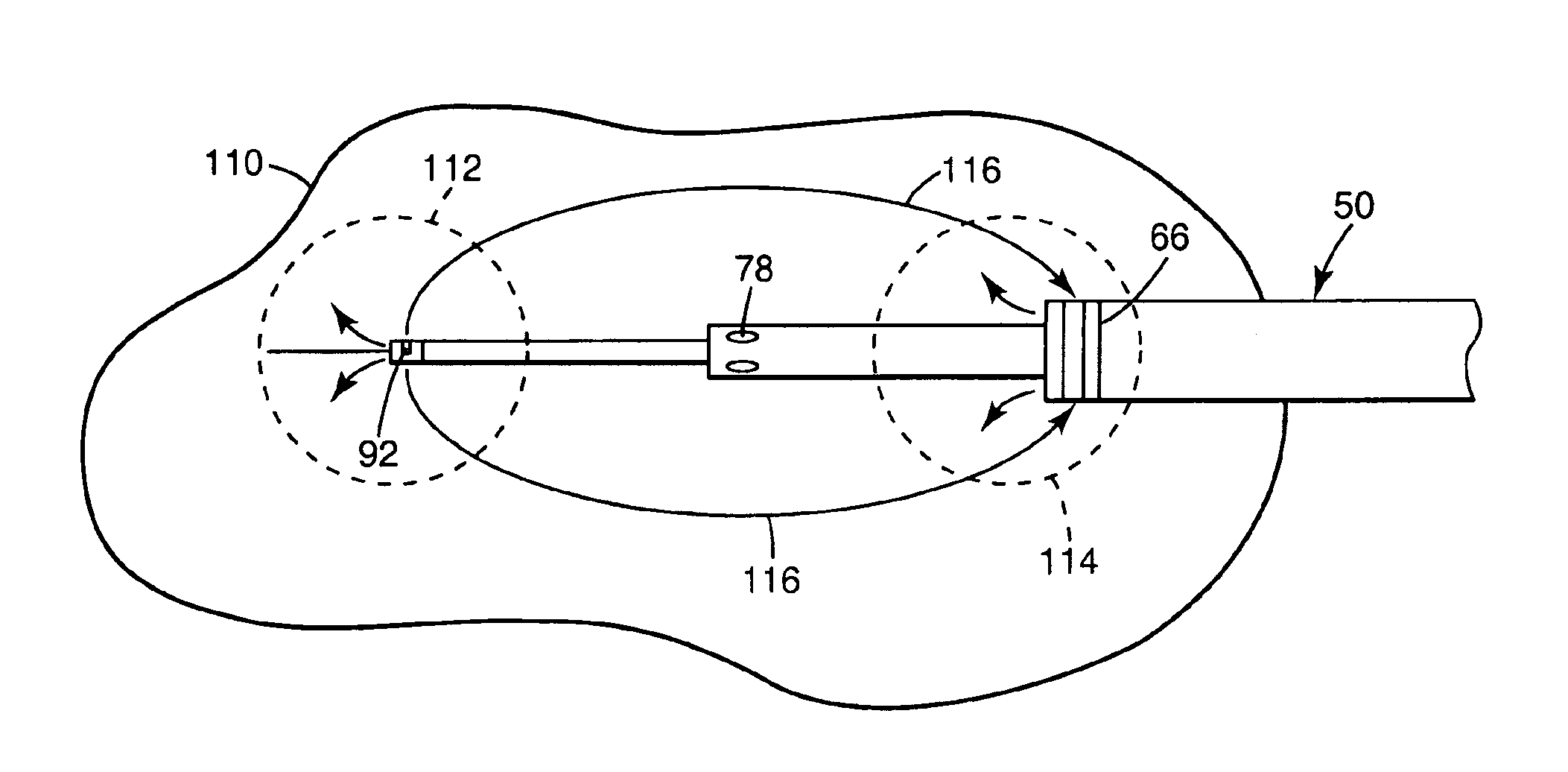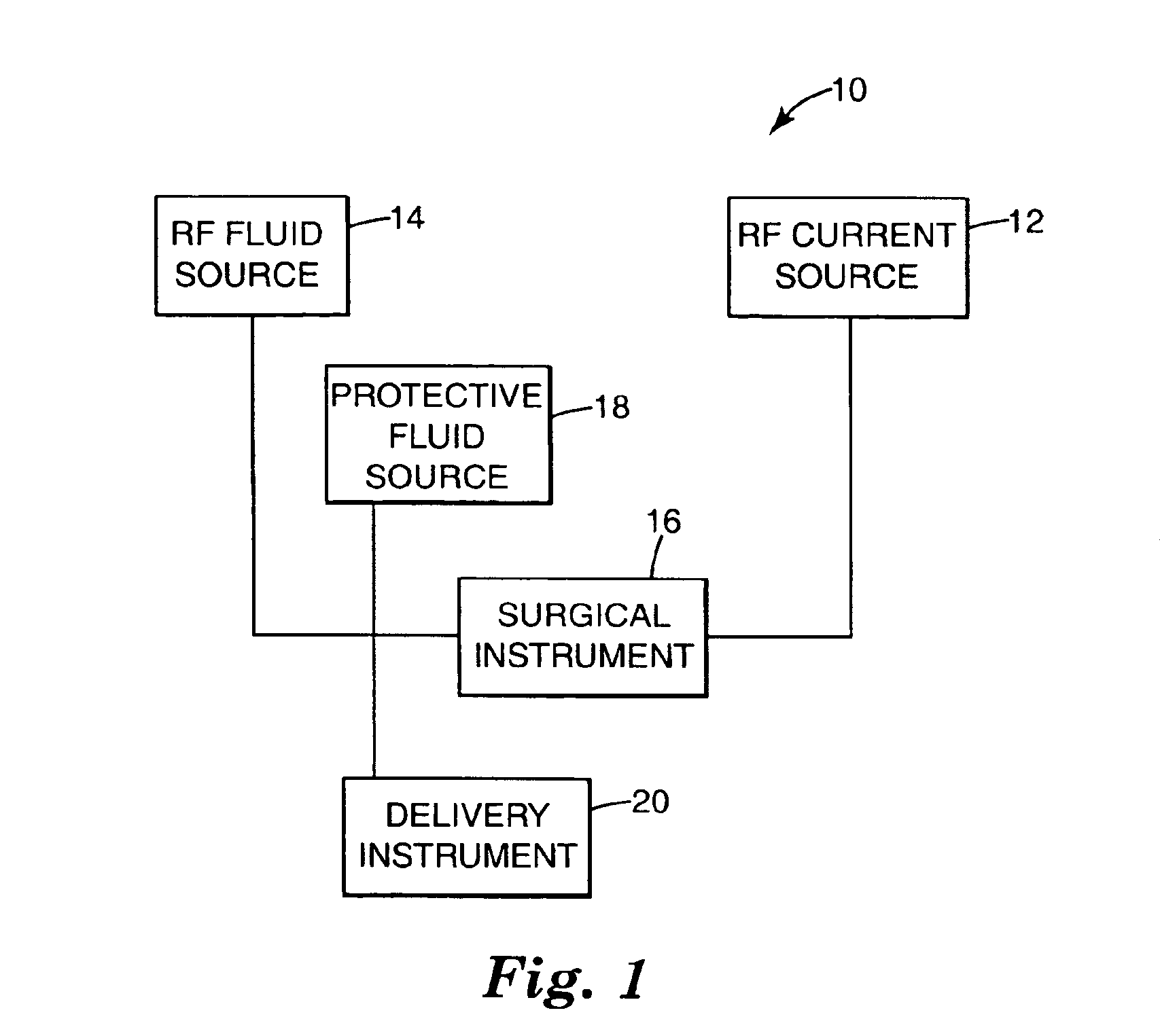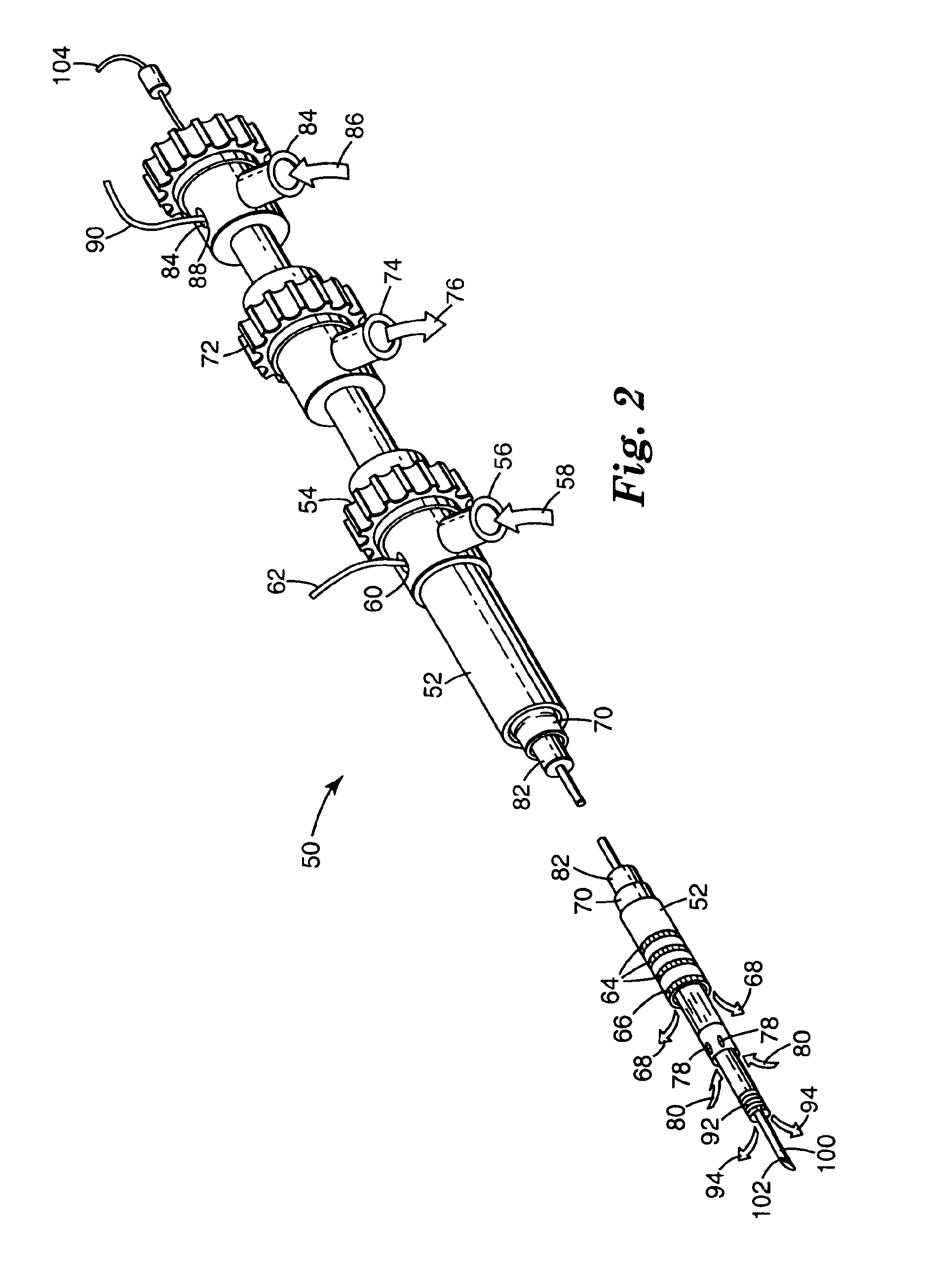Method and apparatus for creating a bi-polar virtual electrode used for the ablation of tissue
a virtual electrode and electrode technology, applied in the field of apparatus for creating a virtual electrode, can solve the problems of local shrinkage and an opening in the tissue, irregular heart beating, and tedious procedures for surgeons and operating sta
- Summary
- Abstract
- Description
- Claims
- Application Information
AI Technical Summary
Benefits of technology
Problems solved by technology
Method used
Image
Examples
Embodiment Construction
[0028]FIG. 1 illustrates in block form a system 10 for RF ablation useful with the present invention. The system 10 includes a current source of radiofrequency alternating electric current 12, a fluid source of RF ablating fluid 14, including but not limited to saline and other conductive solutions, and a surgical instrument 16 for delivering RF current and ablation fluid to a tissue site (not shown) for ablation purposes. In one preferred embodiment, the surgical instrument 16 is connected to the current source 12 and the fluid source 14. It will be understood that the current source 12 and the fluid source 14 may be combined into a single operational structure controlled by an appropriate microprocessor for a controlled delivery of ablating fluid and a controlled application of RF current, both based upon measured parameters such as but not limited to, flow rate, tissue temperature at the ablation site and at areas surrounding the ablation site, impedance, the rate of change of th...
PUM
 Login to View More
Login to View More Abstract
Description
Claims
Application Information
 Login to View More
Login to View More - R&D
- Intellectual Property
- Life Sciences
- Materials
- Tech Scout
- Unparalleled Data Quality
- Higher Quality Content
- 60% Fewer Hallucinations
Browse by: Latest US Patents, China's latest patents, Technical Efficacy Thesaurus, Application Domain, Technology Topic, Popular Technical Reports.
© 2025 PatSnap. All rights reserved.Legal|Privacy policy|Modern Slavery Act Transparency Statement|Sitemap|About US| Contact US: help@patsnap.com



